
Be a Land Steward.
Sign up for Greenhouse Gases -
a weekly-ish newsletter that will teach you the science behind regenerative gardening, with action steps to help you make a difference in your backyard.

Sign up for Greenhouse Gases -
a weekly-ish newsletter that will teach you the science behind regenerative gardening, with action steps to help you make a difference in your backyard.
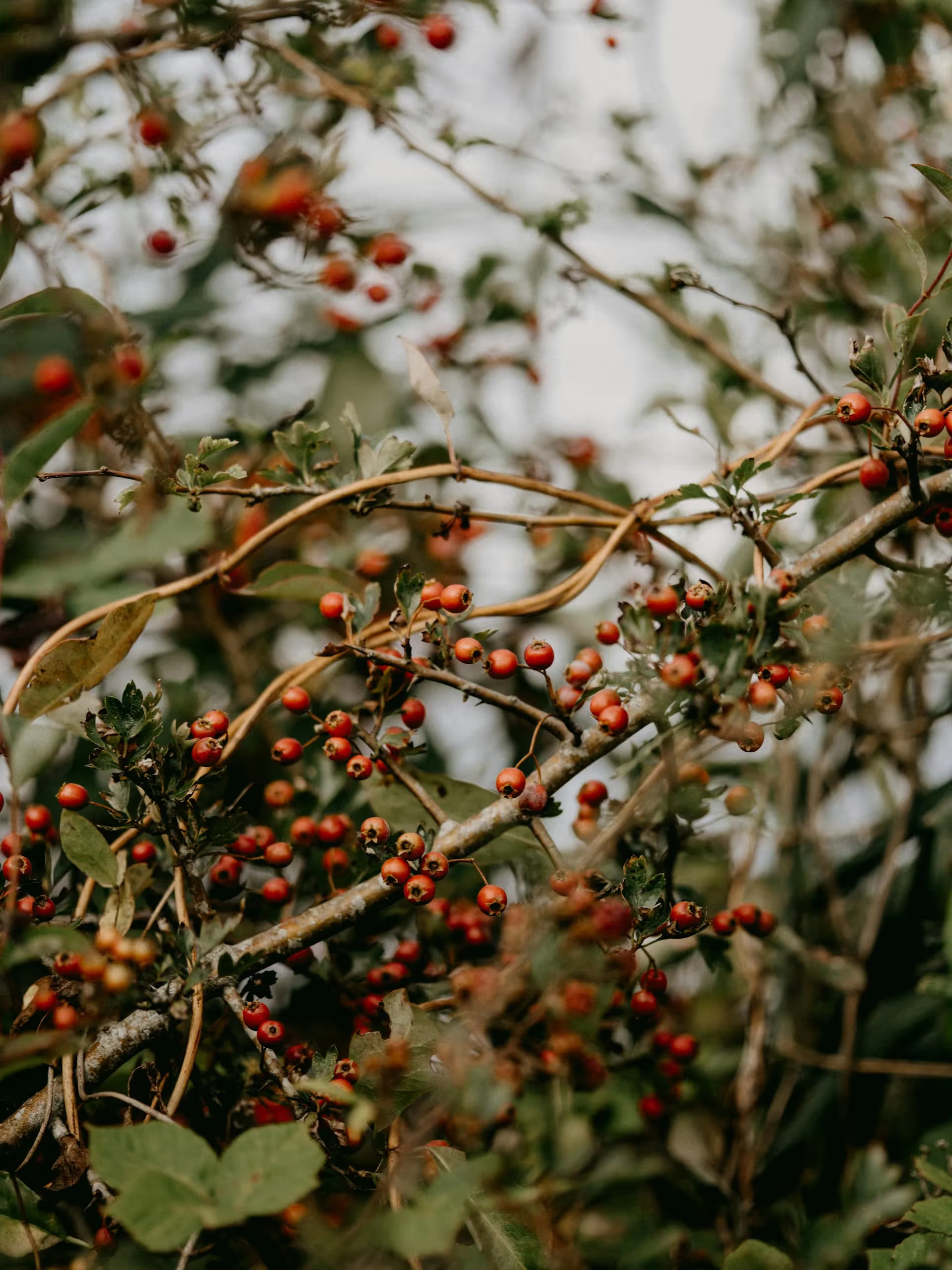
Can you think of a tree as enigmatic and mythic as the Hawthorn?
Hawthorn is deeply entwined with the very fabric of our myths and ecological systems. It’s as rich in cultural significance as it is in biodiversity.
In my own garden, the Black Hawthorn is like a living calendar. Its cycles of growth mark the passage of seasons with a precision that rivals the most intricate of timepieces.
This is a tree that has played a starring role in the folklore of the British Isles, its branches heavy with stories and superstitions that span millennia.
But the hawthorn's tale is not just one of myth. It is also a main player in ecological resilience and importance.
To a range of creatures, this tree offers shelter, nectar, and sustenance. Its robust nature makes it a key ally in the restoration of disturbed lands. In both instances, it contributes to the health and diversity of our planet's ecosystems.
Together, we'll explore hawthorn’s:
In the end, we’ll find out hawthorn's true power: its ability to enchant, sustain, and inspire.
Let’s not hem and haw over it - keep reading to learn more…
Genus: Crataegus
Family: Rosaceae (Rose)
Native Regions: Eurasia, North America
Notable Species:
North America Native:
Europe Native:
Asia Native:
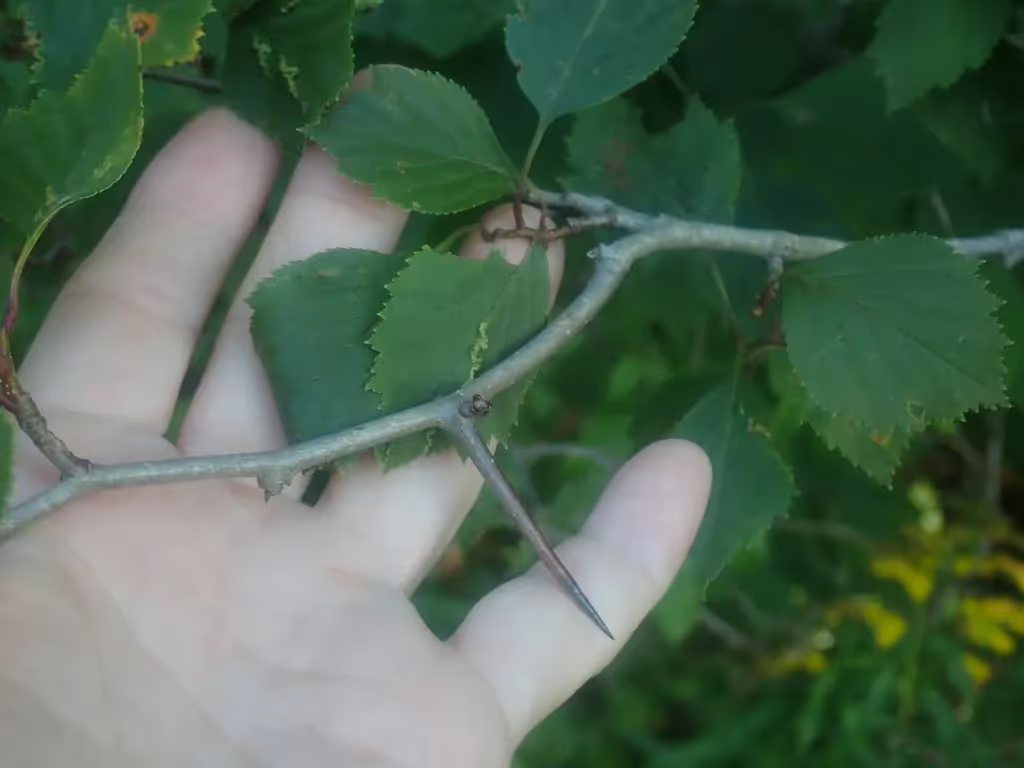
The thorns of hawthorn are a key factor in identification. They are so popular for hedgerows and boundaries because the stems of their branches are covered in 1-4 inch long thorns (MNWF), which can be quite an adventure to get through…if you’re courageous enough to walk through a row of Crataegus, that is.
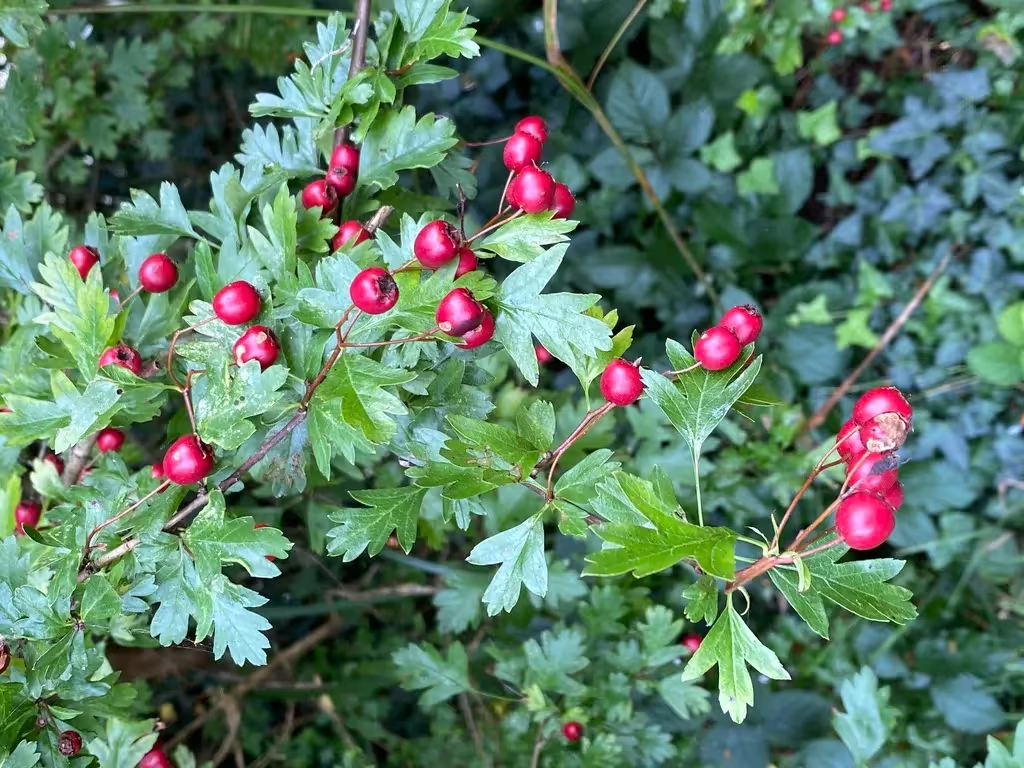
Many hawthorns have deeply lobed leaves. By lobed, I mean that the leaves curve in and out like an oak leaf.
In contrast, PNW-native Black Hawthorn (and other species) has serrated leaves that can be slightly lobed. They resemble the rose plant (and they are in the same family).
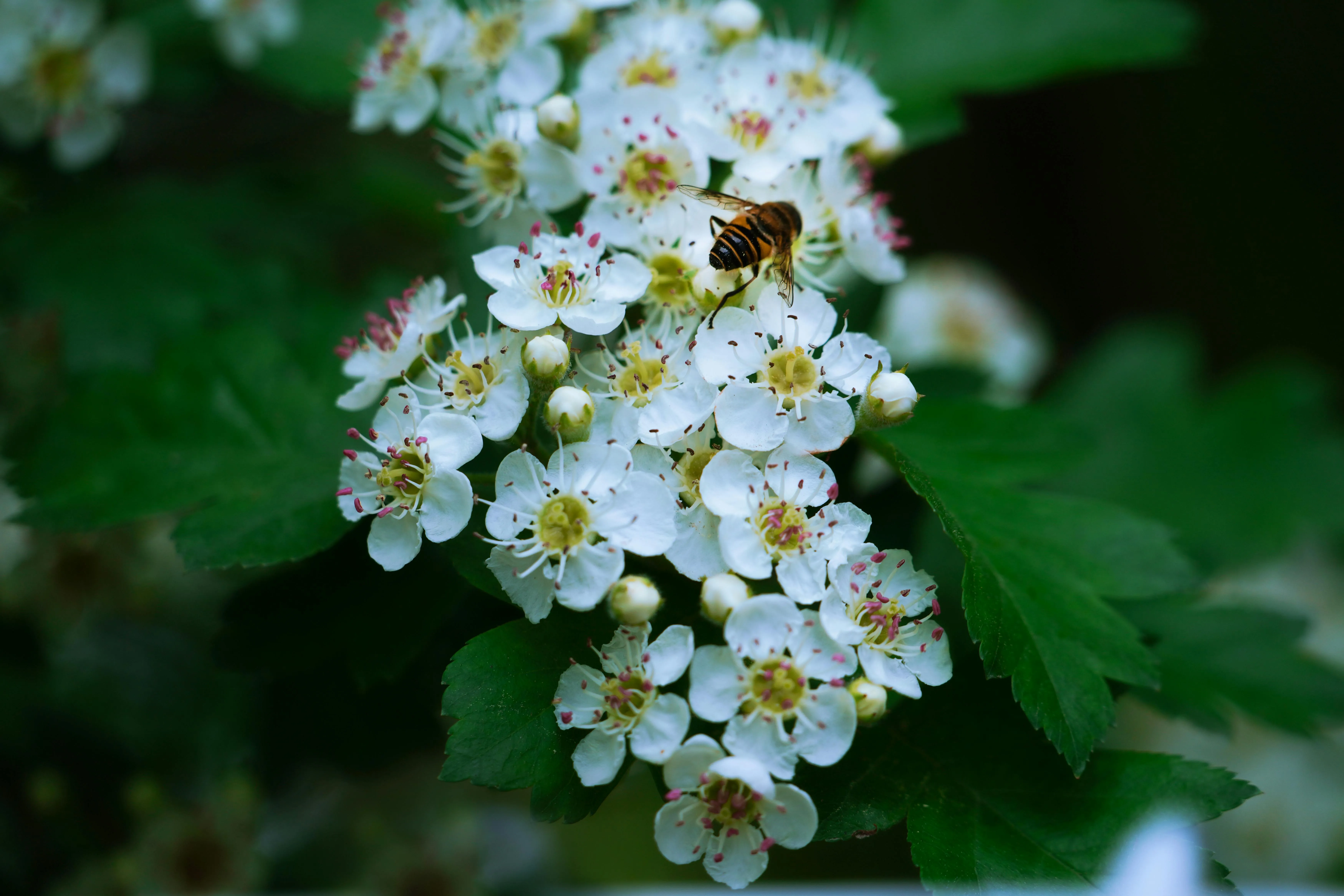
In May, the tree is filled with pinkish-white fragrant flowers that form in clusters. All hawthorns blooms are small in size, have five petals, and are fragrant. They are the official flower of the state of Missouri (MO.gov).
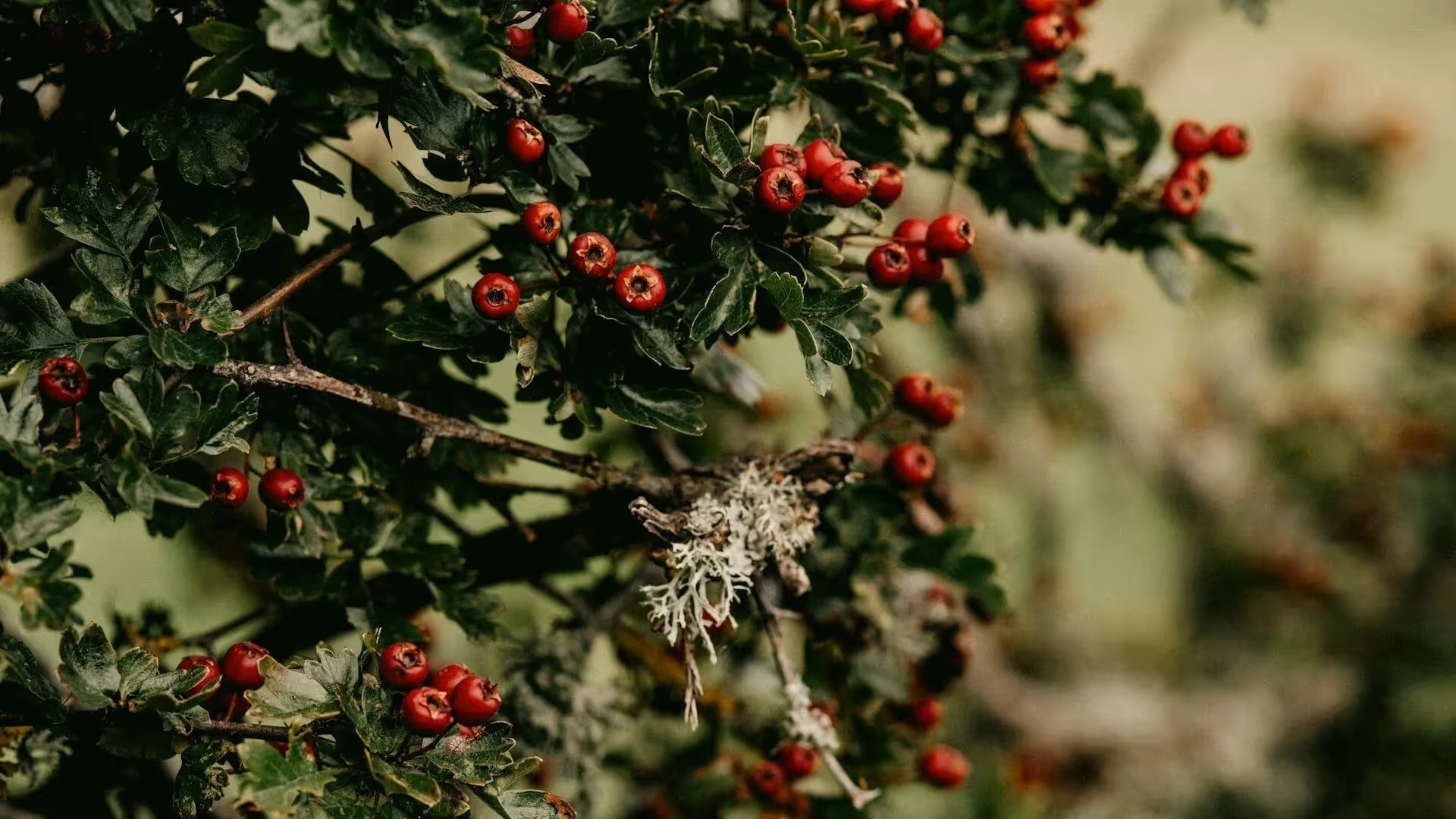
Technically called a pome (like pomegranate, from latin word for apple)
The fruit comes in late summer. Typically, hawthorn berries are a deep red, similar to a rosehip in color.
However, the PNW C.douglasii has a deep eggplant purple pome.
The pomes can also be a deep yellow color (Wikipedia).

Hawthornes can be more shrub-like, but some species look more like trees, and grow 20-50ft tall (monumental trees).
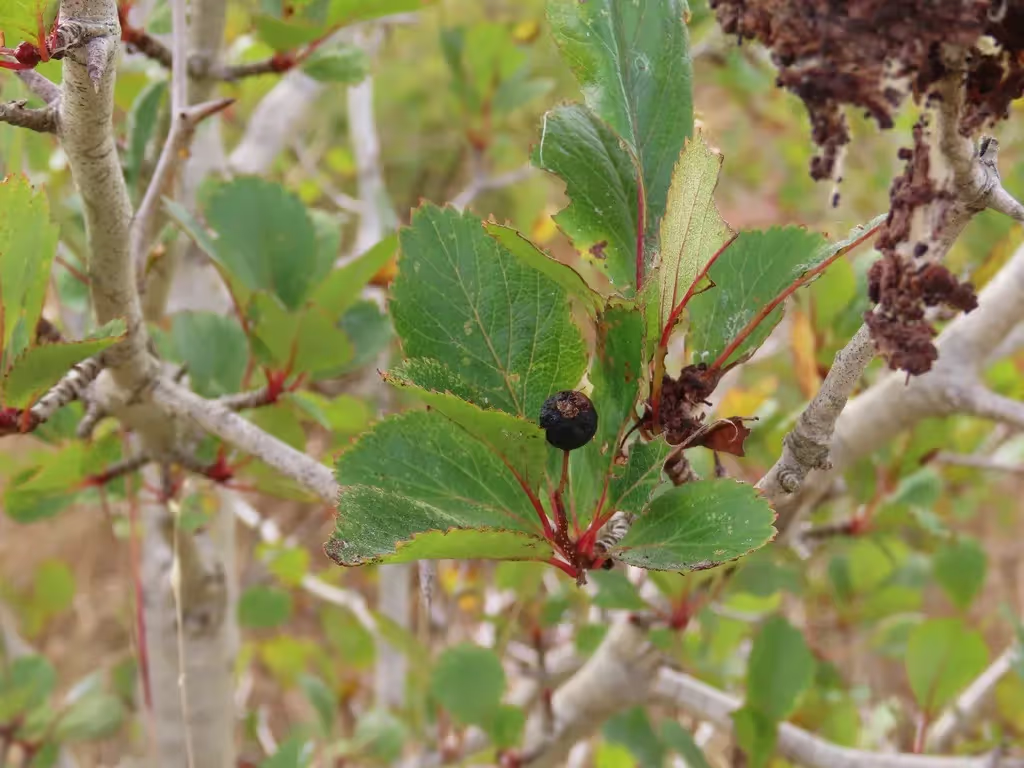
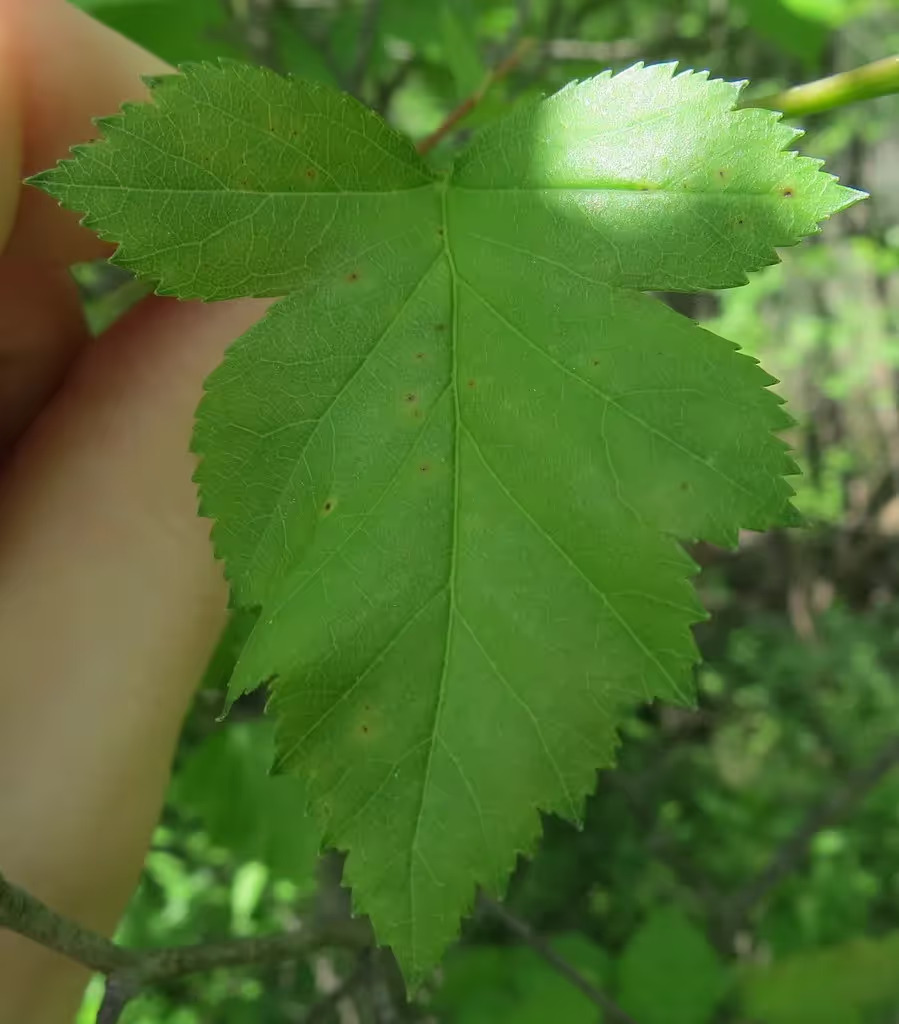
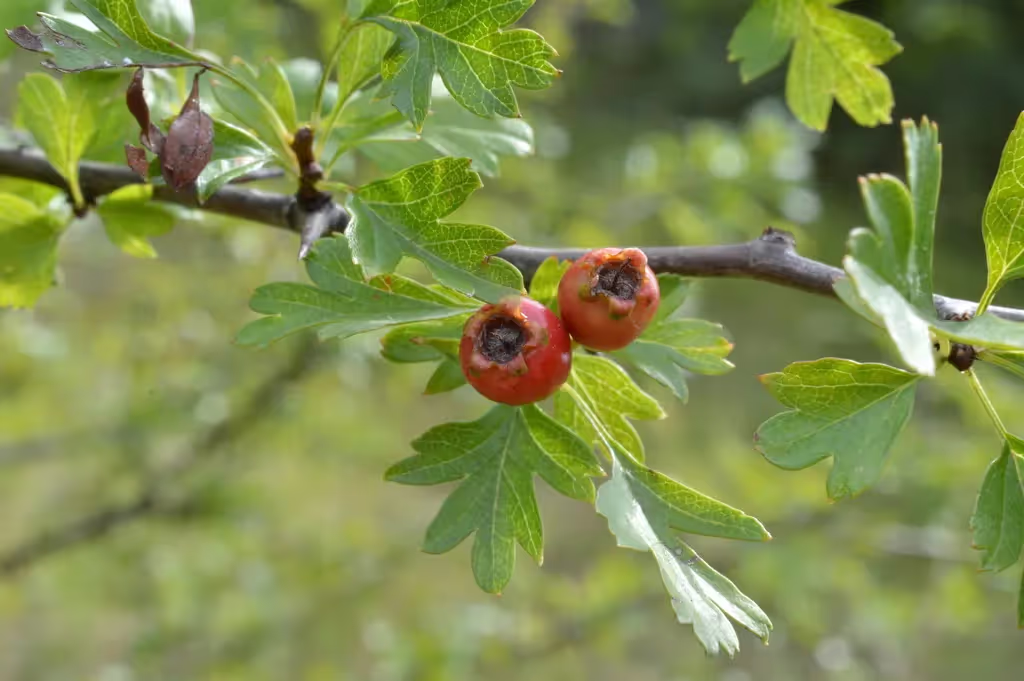
Be cautious if you see Common Hawthorn in your property if you live in the United States, as it can be invasive. Native species are not an issue (OSU).
As a tree with such a strong presence and folklore in various parts of the world, this tree has a lot of names in addition to hawthorn.
It is also called:
(Druidry, Plant Lore, Wikipedia, Woodland Trust, Wild Food UK)
It kind of covers the whole range from enchanting to terrifying, doesn’t it?
Let’s start with the botanical name:
Okay, so now to the English etymology, which is perhaps the most exciting.
Hawthorn. The thorn is due to the distinguishing thorns that grow on this plant - it makes sense to be in the name.
Haw, however, is where it gets interesting. There are two paths that lead us to the etymology of this word.
Path One: Hedge
Path Two: Hag
It’s theorized that both meanings combine into our modern hawthorn - both the connection to witches and the connection to hedges (etymonline).
But humor me as I get really into this…
If you’re on the fence about something, are you hemming and hawing? Haw as a verb means “to hesitate in speech” from around 1580’s English.
My research says that the “hem” comes from the sound of a throat clearing (ahem) and “haw” from imitating haughty British or a similar throat clearing sound (grammarist, phrases).
It’s kind of a big coincidence that “hem” with the edge of clothing, “haw” with the edge of a property, and of course, in our modern times “fence” is on the edge of a property as well.
If you’re in the in-between space, you’re akin to being in between thinking and speaking. I found no evidence that this is the case but thank you for entertaining my nerdy hypothesis.
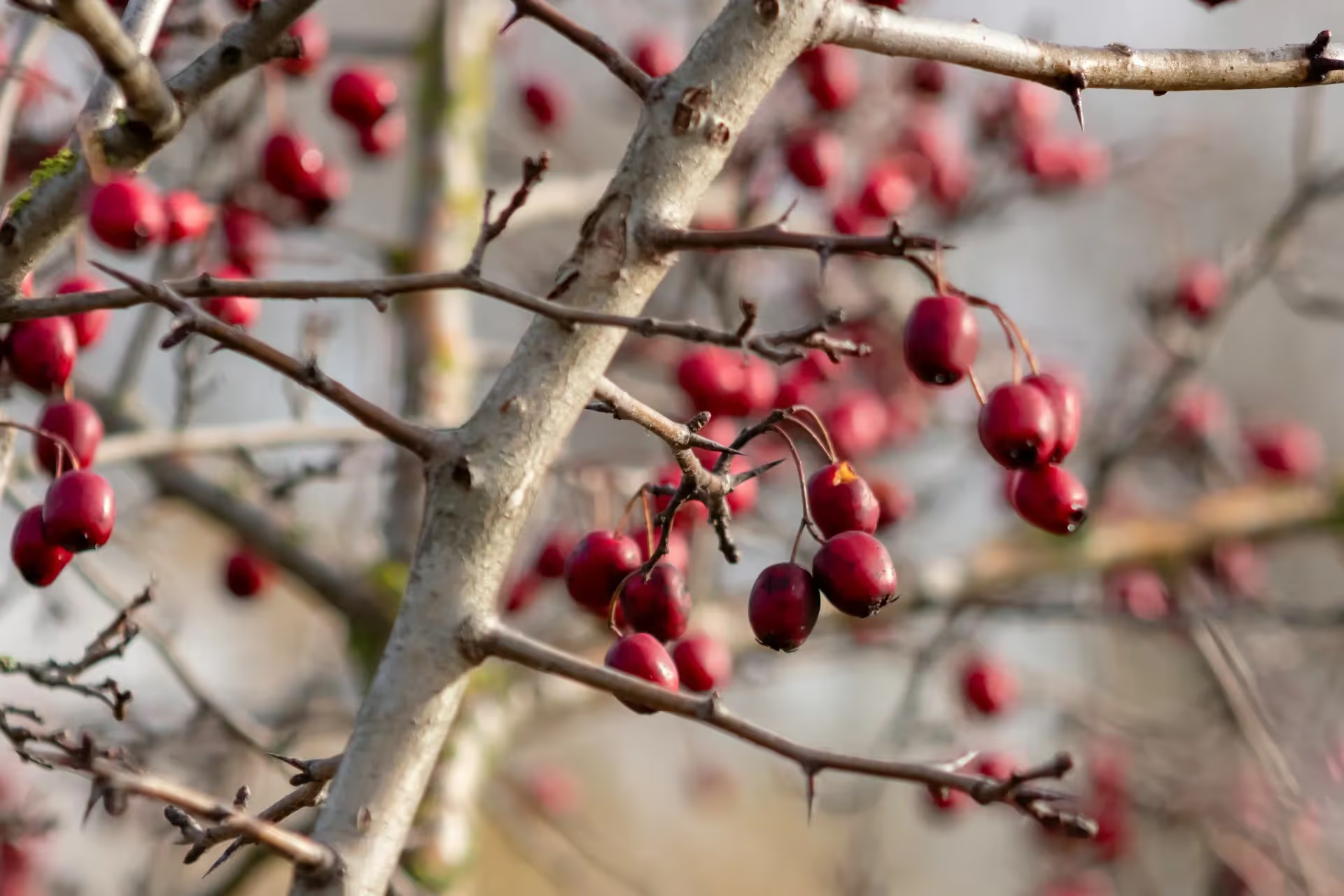
First, the folklore surrounding the tree’s other names that include “May” - this tree was a big part of May Day/Beltane celebrations, which would take place on May 1st.
I learned that this May 1st connection of the flowers being in bloom happened before the Gregorian calendar changeover, which delayed everything by a week. So since then, the tree hasn’t been in bloom in the UK until mid-month (Trees for Life, Farm Ed).
However, here in my yard, I was delighted to see the first flower of my black hawthorn tree open up on May Day!
Interestingly, the fruit on my tree started to be ripe on August 1st which is Lammas in the Pagan Wheel of the Year, the first harvest festival.
This tree played an important role in May Day festivities not only because the blooms made pretty decorations, but also because this tree was seen as a portal to the faeire realms. It is on May Day when the faeiries come back to the forest (Trees for Life).
The time of the flower bloom is short, but there is lore saying that it is extremely unlucky to cut down the tree during any other time in the tree’s cycle. This was especially true if the tree was alone and away from others of the same species. If a tree was a “lone thorn” it was thought to be planted there by lightning.
You also don’t want to bring a branch with blossoms on it inside, as it will bring death according to lore. The interesting thing is that there is a chemical in the fragrance of the flowers that is also present in dead bodies, especially the Midland hawthorn species (Mandy Haggith, Icy Sedgwick, Trees for Life).
Hawthorns enjoy a lot of water, so they are often found on stream banks, wet pastures, and near wells. This connection added to the lore of hawthorns, as certain wells were considered sacred, and thus the tree near it would be sacred too (Icy Sedgwick).
Ogham was a written language that often was seen on boundaries, where it would be used to write the name of the owner of the land. Each letter of the language was connected to a tree, and had further symbolism, akin to Nordic runes.
The letter “uath” is connected to the hawthorn tree, and the symbol means “horror and fear”. This is the 6th letter of the tree alphabet (Mandy Haggith, Wikipedia, CPP).
Alternatively, in Ancient Greece, the hawthorn is a symbol of hope. Branches of this tree were carried in weddings (druid).
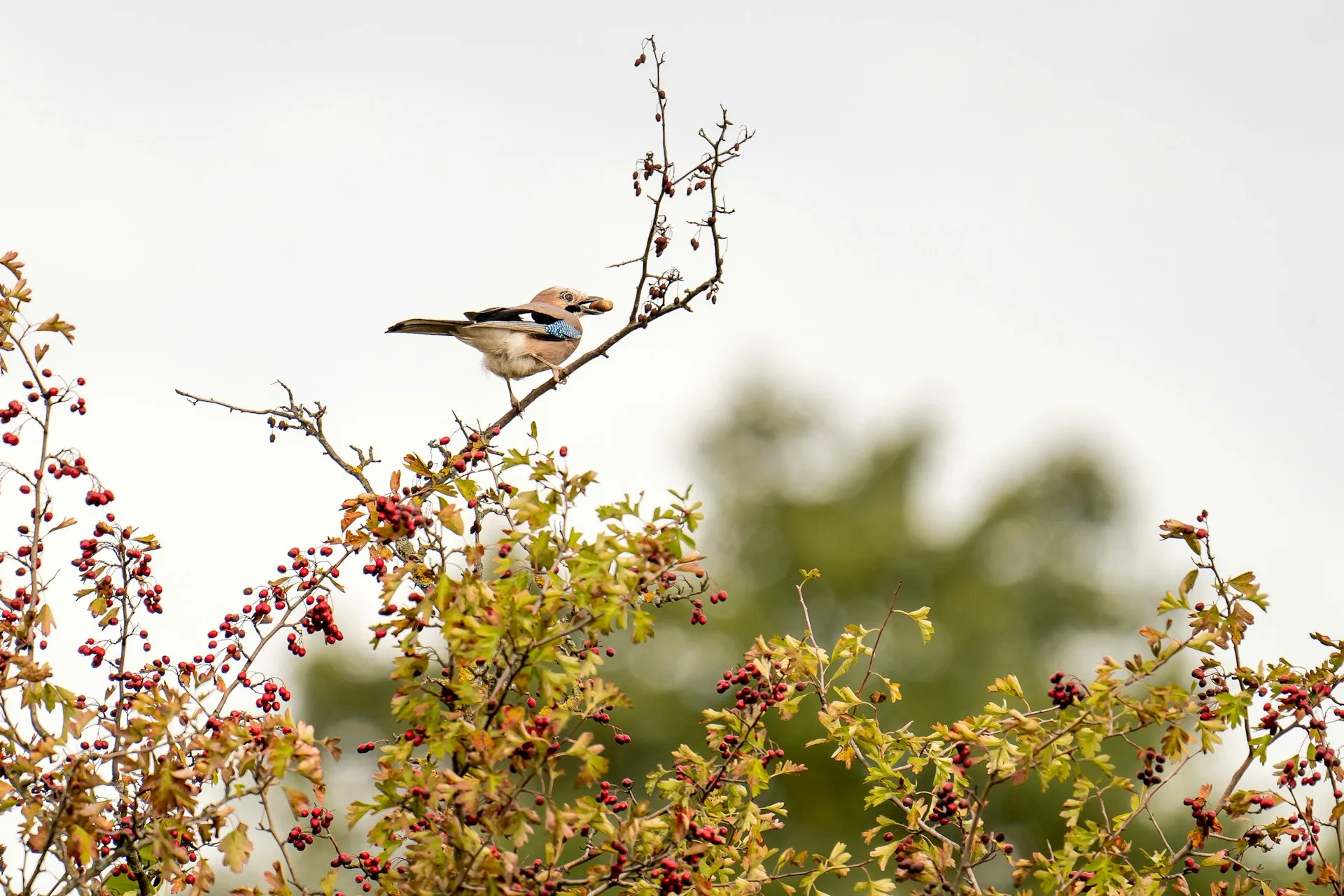
Hawthorn benefits small animals, like birds, with its protective thorns. Many species of birds will form nests in hawthorn trees, such as:
The fruit of the hawthorn provide food for birds and other wildlife. They are one of the few sources of food available throughout the winter.
(Woodland Trust, Forestry, OSU)
The clusters of numerous blooms attract bees and other pollinators to the tree. The flowers are nectar-rich, and are often a favorite amongst native bees.
Over 100 butterfly species select hawthorn as their larval host, and in turn, the caterpillars become food for the birds (OSU).
Sometimes, with herbal medicine, it can be difficult to find a variety of studies done on the properties of a plant.
However, we are pretty lucky with Hawthorn, as it has shown in research to support heart health, improve circulation, and lower blood pressure. The leaves and flowers have flavonoids and procyanidins which are what the studies point at as the components that provide this effect ([Mount Sinai](https://www.mountsinai.org/health-library/herb/hawthorn#:~:text=Hawthorn contains many substances that,been used for medicinal purposes.), NIH1, NIH2, Healthline).
It is crucial to talk with your healthcare provider before taking hawthorn, especially since it can interact with your medications (WedMD).
Please consult a medical professional before working with plants medicinally, and remember that proper identification is crucial when harvesting. The following is for entertainment purposes only.
The leaves, flowers, and fruit of the Hawthorne tree are all worked with in traditional herbal medicine. **
Traditionally, Hawthorn leaves and flowers can be made into a tea/tisane or tincture, and the pomes can be made into jams, tinctures, infused in honey, apple cider vinegar, or wine (Herbal Academy, Trees for Life).
One thing to note with the pomes is that the seeds within them are quite large, and you don’t want to eat the seeds. Similar to apple seeds, the seeds in hawthorne contain arsenic. So it’s essential to strain out the seeds before you can your jam or do anything else with hawthorne pomes.
In herbal tradition, the hawthorn plant is worked with for the heart - both the physical heart and the emotional heart, for example, when feeling anxious-hearted or broken-hearted (Commonwealth Herbs).
This plant has been a part of Chinese Traditional medicine since at least 7000 BCE (NIH), and it was also a popular tonic in medieval europe (Mountain Rose Herbs).
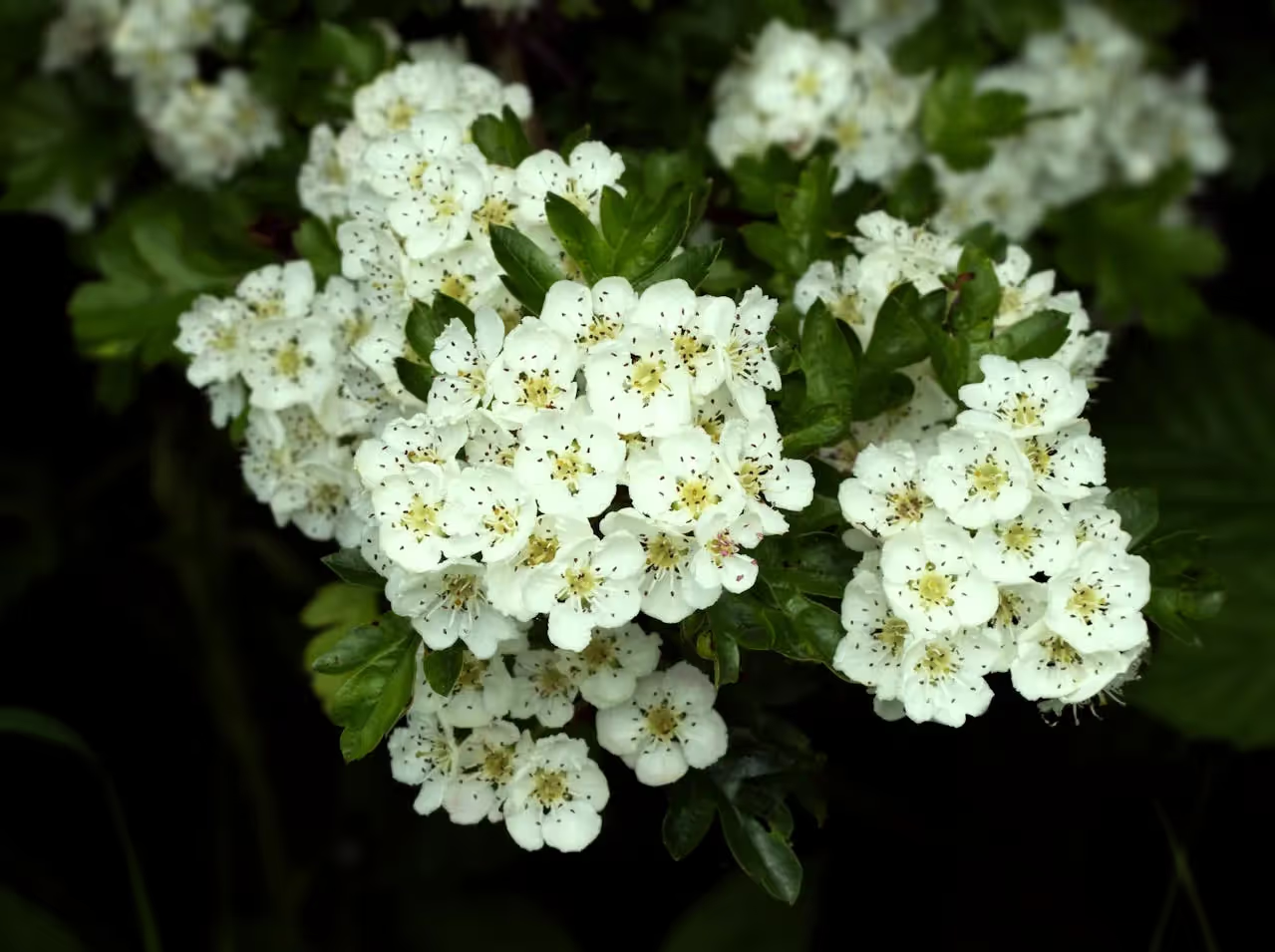
Hawthorns play a role in ecological succession, especially after disturbances from fire, clear-cutting, or infestation. It is often seen as a “pioneer species” - a first responder on disturbed and damaged sites (ILWF).
For example, the Emerald Ash Borer is currently wrecking havoc in our Ash-dominant woodlands. However, hawthorn have the ability to grow in these situations to replace the ash trees and provide habitat, food, and shelter for local wildlife (UAkron).
The fast-growing and deep roots of the hawthorn tree makes it a prime candidate for soil rehabilitation sites to prevent erosion or landslides. Since many species thrive in wet sites, they are a great choice for keeping stream and river banks in tact (forestry).
The hawthorn tree is a testament to how intertwined a plant can be with our ecosystem and culture.
In British folklore, this tree is a portal to other worlds - yet, we can see this “different world” come to life in the way that hawthorn can rehabilitate the landscape, establishing in the soil with rugged determination, and offering food to the wildlife nearly year-round.
Hawthorn trees mark the boundaries of not only realms, but also of time and properties. Its common use as a hedgerow and its seasonal milestones add to its ecological contributions.
Hawthorn is a symbol of endurance, tradition, and wild nature - all in one beautiful tree.
The fruit, or pomes, of hawthorn trees are edible when they are fully mature. However, it is essential to discard the seeds. Some species are mostly seed with a very small amount of edible fruit, such as the Black Hawthorn.
Hawthorn trees are found in temperate regions around the world, from the US and Canada to the UK and Mediterranean to China and Japan.
Since hawthorns are so hardy, they will do well in urban environments. In fact, they can assist in adding more tree density to cities. They can also be well-placed in small yards or along streets to provide visual interest and a source of shelter and food for wildlife.
The hardiness of hawthorns makes them quite easy to grow. Be certain you are purchasing a hawthorn that is native to your area and does well in your landscape conditions. As long as their root system gets established in their first year, they will remain in the landscape for decades - or even centuries - if conditions are optimal and diseases are kept at bay.
Hawthorn trees support soil health, prevent soil erosion, and are a great choice for land rehabilitation projects after a disturbance in the landscape. They provide year-round food and shelter for wildlife, and are a host plant to hundreds of species of butterflies. Their nectar-rich flowers are attractive to many kinds of bees as well.
In some areas of the United States, Canada, and Australia, the Common Hawthorn (Crataegus monogyna) is an invasive species. Common Hawthorn is native to the UK, and it can spread in thickets to displace native and beneficial plants.